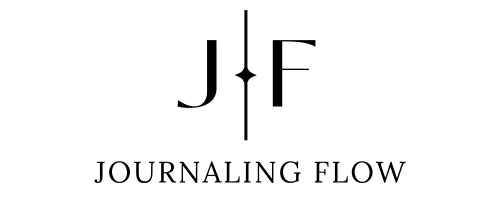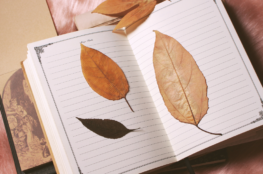
Journaling is an excellent way to manage stress and anxiety, allowing you to process your emotions, release tension, and organize your thoughts. In this post, we’ll explore diverse journaling techniques designed to reduce stress, helping you find methods that best suit your needs.
Why Journaling Helps with Stress Relief
Journaling externalizes your thoughts and feelings, making them easier to manage. It helps you clear your mental clutter, reflect on your worries, and find emotional release.
How journaling helps reduce stress:
- Clarity: Writing helps organize scattered thoughts.
- Release: It provides a safe space to vent without judgment.
- Awareness: Journaling increases mindfulness of stress patterns.
1. Stream-of-Consciousness Journaling
Why it works: This technique is ideal for releasing stress because it allows your thoughts to flow without interruption or structure. By writing freely, you clear mental clutter and unload pent-up emotions.
Exercise: Set a timer for 10-15 minutes and write whatever comes to mind. Let go of the need for coherence or grammar. This process helps relieve tension by getting everything out on paper.
2. Mindfulness Journaling
Why it works: Mindfulness journaling grounds you in the present moment, helping you become more aware of how you feel right now rather than worrying about the future. This focus reduces anxiety and stress by bringing attention to the present.
Exercise: Write about your current feelings, physical sensations, or environment. Use prompts like, “What am I noticing around me?” or “How am I feeling in this moment?” Mindfulness helps shift attention from future worries to the present.
3. Problem-Solving Journaling
Why it works: Stress often arises from unresolved problems. Problem-solving journaling breaks down issues into smaller steps, helping you regain control. It reduces anxiety by turning your journal into a space for finding practical solutions.
Exercise: Write down a specific problem causing you stress. Break it into smaller parts, and brainstorm potential solutions or actions. This helps you feel empowered and less overwhelmed.
4. Art and Collage Journaling
Why it works: Art and collage journaling allows you to express emotions visually. This method bypasses words and provides an outlet for creative stress relief. Visual expression, whether through drawing or creating collages, is a powerful way to channel emotions.
Exercise: Use your journal to sketch or create collages using images or colours that represent your feelings. By engaging your creativity, you’ll release tension and access emotions you may not easily articulate through words.
5. Journaling for Reframing Negative Thoughts
Why it works: Stress often comes from negative thought patterns. Reframing journaling helps you challenge these thoughts, turning them into more balanced or positive perspectives. It’s an effective way to reduce stress by reshaping how you interpret difficult situations.
Exercise: Write down a stressful thought. Analyze it by asking questions like, “What evidence supports or disproves this thought?” or “Is there another way to see this situation?” By reframing, you’ll reduce the emotional intensity of the stressor.
6. Nightly Reflection
Why it works: Ending your day with a reflective journaling session helps you process daily stress and release tension. You can reflect on stressful moments, acknowledge what went well, and practice gratitude, shifting focus to the positives before sleep.
Exercise: Before bed, write about your day, focusing on moments of stress and how you handled them. Reflect on any lessons learned or things you are grateful for. This practice helps clear your mind for a more restful night.
7. Nature Journaling
Why it works: Being in nature has been shown to reduce stress, and journaling about your natural surroundings amplifies this calming effect. Nature journaling promotes mindfulness by encouraging you to observe and connect with the environment.
Exercise: Spend time outside and note the sounds, sights, and sensations you experience. Reflect on how being in nature affects your mood or stress levels. This practice connects you to the present moment and reduces anxiety.
8. Visualization Journaling
Why it works: Visualization journaling allows you to mentally escape stressful situations by imagining a peaceful or desired outcome. Writing about these visualizations reinforces your ability to calm your mind and reduces stress through positive imagery.
Exercise: Write about a calming place or scenario where you feel completely at ease. Describe the scene in vivid detail—how it looks, sounds, and feels. This helps you mentally “step away” from stress.
9. Sensory Journaling
Why it works: Focusing on your senses helps you become grounded in the present. Sensory journaling redirects your attention to immediate, tangible experiences, pulling your mind away from anxious thoughts.
Exercise: Spend five minutes writing about what you see, hear, feel, or smell. For example, describe the texture of your chair, the scent of a candle, or the sound of birds. This brings your focus to the present moment, alleviating stress.
Conclusion: Discover the Right Stress-Relieving Technique for You
Journaling for stress relief offers many pathways to calm. Whether you choose stream-of-consciousness writing, visual expression, or problem-solving, there’s a technique that fits your personal needs. Incorporating one or more of these methods into your daily routine will help you manage stress more effectively and bring more balance into your life.
Want more journaling inspiration?
Get exclusive prompts, techniques, and insights straight to your inbox.
Join the Journaling Flow newsletter today!

